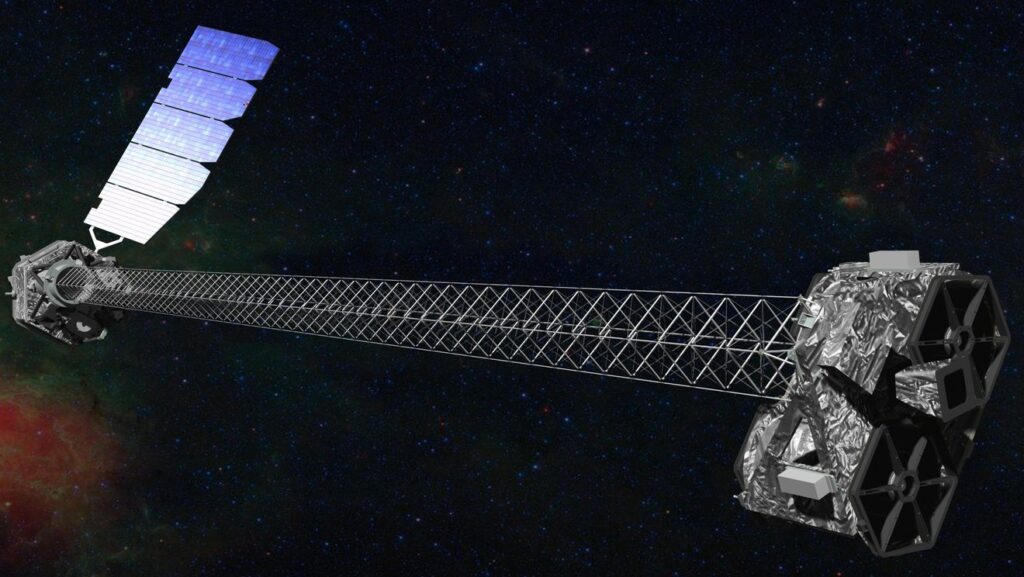This content has been archived. It may no longer be relevant

Credit: NASA/JPL-Caltech
After a decade of observing some of the hottest, densest, and most energetic regions in our universe, this small but powerful space telescope still has more to see.
NASA’s Nuclear Spectroscopic Telescope Array (NuSTAR) is turning 10. Launched on June 13, 2012, this space telescope detects high-energy X-ray light and studies some of the most energetic objects and processes in the universe, from black holes devouring hot gas to the radioactive remains of exploded stars. Here are some of the ways NuSTAR has opened our eyes to the X-ray universe over the last decade.
Seeing X-Rays Close to Home
Different colors of visible light have different wavelengths and different energies; similarly, there is a range of X-ray light, or light waves with higher energies than those human eyes can detect. NuSTAR detects X-rays at the higher end of the range. There aren’t many objects in our solar system that emit the X-rays NuSTAR can detect, but the Sun does: Its high-energy X-rays come from microflares, or small bursts of particles and light on its surface. NuSTAR’s observations contribute to insights about the formation of bigger flares, which can cause harm to astronauts and satellites. These studies could also help scientists explain why the Sun’s outer region, the corona, is many times hotter than its surface. NuSTAR also recently observed high-energy X-rays coming from Jupiter, solving a decades-old mystery about why they’ve gone undetected in the past.

Illuminating Black Holes
Black holes don’t emit light, but some of the biggest ones we know of are surrounded by disks of hot gas that glow in many different wavelengths of light. NuSTAR can show scientists what’s happening to the material closest to the black hole, revealing how black holes produce bright flares and jets of hot gas that stretch for thousands of light-years into space. The mission has measured temperature variations in black hole winds that influence star formation in the rest of the galaxy. Recently, the Event Horizon Telescope (EHT) took the first-ever direct images of the shadows of black holes, and NuSTAR provided support. Along with other NASA telescopes, NuSTAR monitored the black holes for flares and changes in brightness that would influence EHT’s ability to image the shadow cast by them.

